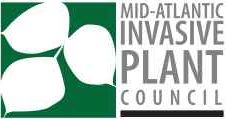What is a non-native plant?
We call plants “non-native” if they have been moved by people to places outside their known natural range where they would not likely have been dispersed naturally by wind, water or wildlife. Other terms often used for non-native include alien, exotic and non-indigenous.
What makes a non-native plant invasives?
Non-native plants are considered invasive when they become abundant and grow in a manner that causes habitat degradation, displacement of native plants and animals and disruption of ecological processes.
How many invasive plants are there?
Of the nearly 5,000 non-native plants occurring in the wild in the U.S., over 1,200 species are reported to be invasive in natural areas, according to the Invasive Plant Atlas of the United States (www.invasiveplantatlas.org). In the mid-Atlantic region, over 300 invasive plant species pose a threat to our native flora and fauna.
Some highly invasive plants in our area include:
Aquatics
- Eurasian watermilfoil
- Hydrilla
- Water chestnut
Forbs
- Beefsteak Plant
- Fig buttercup
- Garlic mustard
- Japanese knotweed
- Purple loosestrife
Grasses
- Exotic bamboos
- Japanese stiltgrass
- Wavyleaf basketgrass
Shrubs
- Amur honeysuckle
- Chinese privet
- Japanese barberry
- Multiflora rose
Trees
- Callery pear
- Princess tree
- Tree of heaven
- White mulberry
Vines
- Asiatic bittersweet
- Chinese & Japanese wisteria
- Creeping euonymus
- English ivy
- Fiveleaf akebia
- Japanese honeysuckle
- Kudzu
- Mile-a-minute weed
- Porcelain-berry
- Sweet autumn virgins-bower
